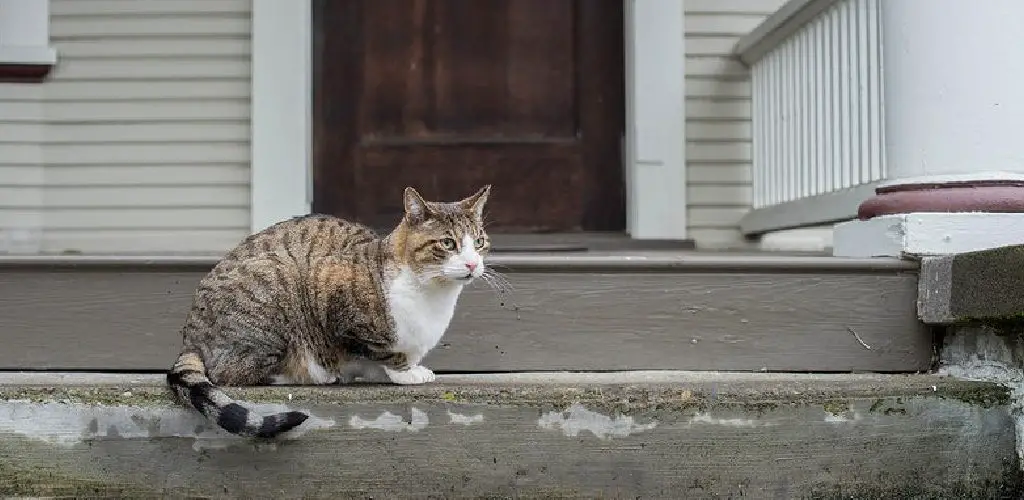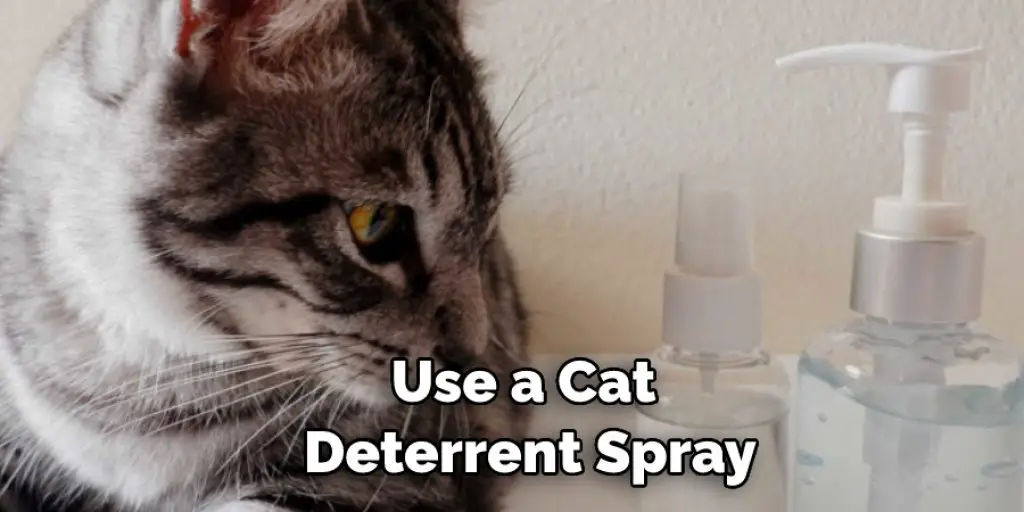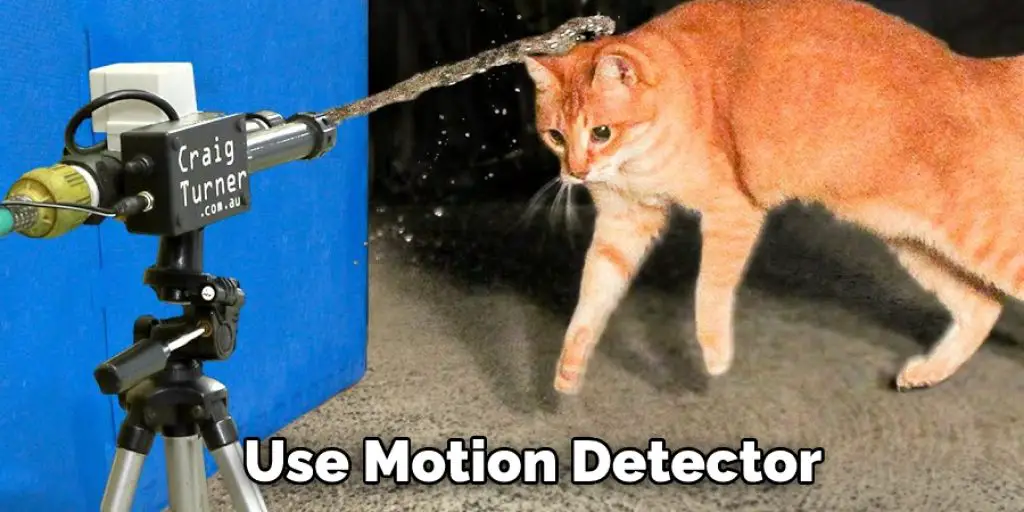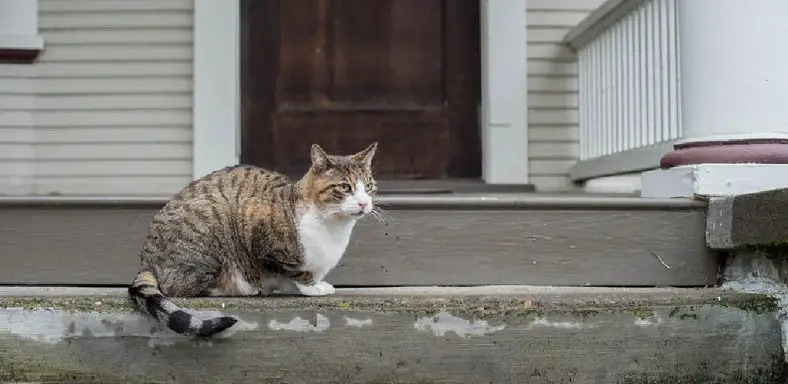Keeping cats from going upstairs is a common issue for cat owners. While many methods can be used to achieve this, not all are effective. In this article, we will discuss some of the most popular ways how to keep cats from going upstairs. We will also provide some tips on how to prevent your cat from climbing up to dangerous areas in the first place.

We all love our cats, but sometimes their climbing habits can be a nuisance. So if you’re tired of finding your feline friend perched atop your home’s highest surfaces, it’s time to take action. It can be challenging to keep cats from going upstairs, but it’s not impossible. There are a few different ways to keep cats from going upstairs, and we’ve outlined some of the most popular methods below.
Contents
Why Does My Cat Keep Going Upstairs?
If you’re like most cat parents, you probably have a few questions about your feline friend’s behavior. One common question is, “Why does my cat keep going upstairs?” There are a few possible reasons for this behavior.
They Enjoy the Higher Vantage Point
Your cat may enjoy going upstairs because they love the higher vantage point. Cats are natural climbers, and they love to be up high to see everything going on. If you have a cat that loves to be up high, you may consider getting them a cat tree or some other type of climbing structure.
Warmth
Another reason your cat may be drawn to going upstairs because it’s usually warmer than downstairs. Cats are very sensitive to temperature changes, and they often prefer to be in a warm spot. If your home is particularly cold, you may consider moving your cat’s bed or litter box upstairs to make them more comfortable.

Privacy
Some cats may also prefer to go upstairs because they feel like it’s a more private and intimate space. If you have a multi-cat household, your cat may feel like they need to get away from the other cats to have some peace and quiet. If this is the case, you may want to provide your cat with a designated space upstairs that they can call their own.
Good View of Surroundings
Your cat may enjoy going upstairs because they have a good view of their surroundings. Cats are curious creatures, and they love to watch the world around them. If your cat seems to be spending a lot of time looking out the window, you may want to consider getting them a perch or some other type of catio to enjoy the outdoors safely.
Safety
Lastly, your cat may be drawn to going upstairs because they feel like it’s a safer space. However, if you have a dog or other pet that makes your cat feel unsafe, they may start spending more time upstairs where they feel like they can’t be reached. If this is the case, you’ll need to work on helping your cat feel safe and secure in all areas of your home.
A Detailed Guide on How to Keep Cats From Going Upstairs
Way 1: Use a Cat Deterrent Spray
If you want to keep your cats from going upstairs, one of the best things you can do is use a cat deterrent spray. There are many different types of these sprays available on the market, so be sure to read the labels carefully before purchasing.

Most of these sprays work by releasing a strong scent that cats find unpleasant. However, citrus-based sprays are often very effective at deterring cats.
Step 1: Determine Where Your Cat is Going Upstairs.
The first step in using a deterrent spray is to figure out where your cat is trying to go upstairs. This will help you to target the spraying more effectively.
Step 2: Purchase a Cat Deterrent Spray.
There are many different types of these sprays available for purchase online and at pet stores. Be sure to read the labels carefully before making your purchase.
Step 3: Spray the Area Around Where Your Cat is Trying to Go Upstairs.
Spray the area liberally with the deterrent spray, making sure to get into all of the nooks and crannies. Then, be sure to reapply the spray regularly, especially if it rains or if you notice that your cat is still trying to go to the area.
Way 2: Use a Physical Barrier
Another way to keep cats from going upstairs is to use a physical barrier. This can be as simple as placing furniture in front of the stairs or using double-sided tape on the stair treads.
Step 1: Choose a physical barrier.
There are many physical barriers that you can use to keep cats from going upstairs. Some options include placing furniture in front of the stairs, using double-sided tape on the stair treads, or installing a pet door that only allows cats to go downstairs.
Step 2: Place the Barrier in Front of the Stairs.
If you are using furniture as your barrier, place it in front of the stairs. If you are using double-sided tape, apply it to the stair treads. If you are installing a pet door, follow the instructions that come with the door.
Step 3: Test the barrier.
Once you have placed your barrier, test it to ensure it is working. Try to get your cat to go upstairs and see if they can get past the barrier. If they are, you may need to try a different type of barrier.

Physical barriers are a great way to keep cats from going upstairs, but they may not be the best option for every situation. For example, if you have a multi-level home, it may not be practical to block off all stairs. In this case, you may want to try another method, such as using a pet gate.
Way 2: Place Double-Sided Tape on the Stairs
Cats don’t like the feel of sticky tape on their paws, so placing some double-sided tape on the stairs will deter them from going up. You can also use this technique to keep cats off furniture or other areas you don’t want them to go. Just remove the tape when you’re done, as it can be challenging to get off and may damage your surfaces.
Step 1: Determine where you want to place the tape.
Put the tape on the first step if you’re trying to keep your cat from going upstairs. If you’re trying to keep them off furniture, put the tape around the perimeter of the piece or along any edges they like to sharpen their claws on.
Step 2: Place the double-sided tape on the surface.
Press down firmly to make sure the tape adheres well. You may need to use more than one strip of tape depending on the area you’re covering.
Step 3: Test it out!
See if your cat will still try to go in the area you’ve taped off. If they do, try using a stronger adhesive or adding more tape strips.
You can also try using other materials like aluminum foil or carpet runner with the spikes facing up to deter your cat from going in a certain area. But, again, be creative and see what works best for your cat!
Way 4: Use Motion Detector
A motion detector is an electronic device that detects the presence of moving objects. It usually works by detecting infrared radiation, which all warm-blooded animals emit. Motion detectors can be used to detect intruders in a home or office, and they are also used in security systems.
There are two main types of motion detectors: passive and active. Passive motion detectors do not emit any energy, but they can detect movement within a certain range. Active motion detectors emit energy, which is reflected when it hits an object. Active motion detectors are more accurate than passive motion detectors, but they require a power source. Motion detectors can be purchased at most home improvement stores or online.

Step 1: Choosing a Motion Detector
There are many different types of motion detectors available on the market. When choosing a motion detector, consider the following factors:
- The type of sensor: Passive infrared (PIR) sensors are the most common type of motion detector. They detect body heat so that animals and people can trigger it. Microwave sensors emit microwave energy and detect changes in the reflected waves. These sensors are more expensive than PIR sensors, but they are more accurate and have a more extended range.
- The detection range: Motion detectors come with different detection ranges. The average detection range for a PIR sensor is 30 feet (9 meters). Microwave sensors have a greater range, up to 100 feet (30 meters).
- The field of view: Motion detectors have a limited field of view. PIR sensors have a wide field of view, while microwave sensors have a narrow field of view.
- The sensitivity: Motion detectors can be set to different sensitivity levels. A higher sensitivity means that smaller objects and animals will trigger the detector. Lower sensitivity means that larger objects and animals will only trigger the detector.
- The power source: Motion detectors need a power source, such as batteries or an AC adapter. Some motion detectors come with solar panels, which can be used to recharge the batteries.
Step 2: Installing the Motion Detector
Once you have chosen a motion detector, follow the instructions that come with the device. Most motion detectors can be mounted on a wall or ceiling. If you are mounting the detector on a ceiling, ensure that the sensor is pointing down.
Step 3: Adjusting the Sensitivity
Once the motion detector is installed, you will need to adjust the sensitivity. This can be done by turning a knob on the device. Start with low sensitivity and increase it until the detector is triggered only by the objects or animals that you want it to detect.
Step 4: Testing the Motion Detector
Once you have adjusted the sensitivity, test the motion detector by moving around in front of it. The detector should trigger when you move into its field of view. If it does not, try increasing the sensitivity.
Conclusion:
As you can see, there are a few simple things that you can do to help keep your cats from going upstairs. By following these methods on how to keep cats from going upstairs, you can rest assured that your feline friends will stay safe and out of trouble.

